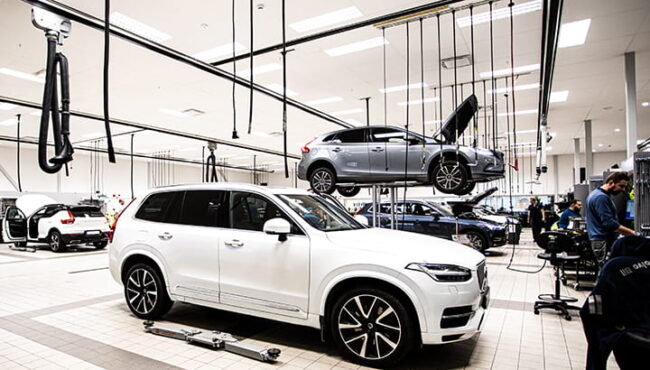
Step into any modern dealership or auto-service center, and you’ll see digital screens flashing star ratings, testimonials, and service stats. But beneath all that data lies a deeper question – how can drivers trust what they see?
Car buyers and owners want to know which reviews are genuine, how feedback is handled, and whether it leads to real improvement. In this industry, transparency is about showing accountability, acknowledging mistakes, and proving that every opinion, good or bad, drives change.
Why transparency builds stronger automotive brands
Trust defines every purchase decision in the auto sector, from buying a new SUV to choosing a tire shop. Transparent feedback systems help dealerships, repair centers, and car brands earn that trust by showing how they listen and act.
Key drivers of transparency include:
- Open review platforms that display verified customer comments.
- Visible follow-up actions showing how feedback led to better service.
- Ethical moderation that filters hate speech but keeps valid criticism.
- Unified tone across replies, so every customer feels respected.
When car owners see a dealership addressing problems rather than hiding them, loyalty deepens and so does word-of-mouth credibility, which remains one of the strongest marketing forces in the automotive field.

Technology that ensures authenticity in automotive feedback
As online reviews expand, fake testimonials and automated posts have become a growing concern. Automotive businesses are increasingly adopting verification and AI-based detection tools to preserve trust.
One of the most practical examples is AI content detector, which analyzes feedback text to spot potentially generated or suspicious content. For dealerships and aftermarket service providers managing hundreds of reviews each month, such technology helps identify non-authentic input early.
The goal isn’t to replace human judgment, but to protect genuine voices that reflect real customer experience. When drivers see that every review is verified, they’re far more likely to believe in the transparency of the brand behind it.
Building a customer-centric feedback loop in the automotive industry
Transparency doesn’t start on review sites, it begins inside the garage. Employees who value honest communication translate that authenticity to the customer. Creating a structured feedback cycle ensures that comments turn into measurable improvement.
|
Step |
Purpose |
Automotive example |
| Collect | Capture feedback from surveys, service reports, and post-purchase calls. | “How was your brake service experience?” |
| Analyze | Categorize trends using CRM or analytics tools. | Detecting repeat issues with delivery times. |
| Act | Implement process updates and assign accountability. | Training staff for faster handovers. |
| Communicate | Share updates publicly or via follow-up emails. | “We’ve streamlined our appointment system based on your feedback.” |
This process helps workshops refine operations and reassures customers that their voices matter.
Responding to criticism the right way
Negative feedback is inevitable in the car business – missed appointments, miscommunication, or delayed parts all happen. The defining factor is how businesses respond.

Key response tactics
- Acknowledge quickly. A short message like “We’ve received your note and are investigating” goes a long way.
- Accept responsibility. Customers prefer an honest apology over corporate defensiveness.
- Show your fix. Share concrete actions, not vague promises.
- Stay human. Avoid template responses – they feel insincere.
Did you know? Studies from DealerRater show that dealerships replying to reviews within 24 hours see up to 20% higher return visits compared to those that stay silent. Fast and honest communication is still the best advertisement.
Managing transparency across automotive channels
Car buyers use multiple touchpoints before and after a purchase – each one needs consistent communication.
- Manufacturer websites: Publish both positive and critical reviews of models.
- Dealership listings: Include verified customer ratings, with context if issues have been resolved.
- Social media: Use public comments as teaching moments, not PR battles.
- Service apps: Share statistics like average waiting times or satisfaction scores.
Subnote: Automotive brands that standardize review responses across all platforms report up to 35% higher retention rates, according to a 2024 CX study by AutoTrader Insights.
How to measure if transparency is working
Authenticity should show measurable results. Automotive businesses can monitor several key indicators to confirm that their transparency efforts are paying off:
|
Metric |
Description |
Why it matters |
| Verified review ratio | % of confirmed real vs. flagged fake feedback | Ensures trust in customer voice. |
| Response time | How quickly customer comments get addressed | Reflects service efficiency. |
| Resolution success rate | How often a complaint leads to a fix | Proves commitment to improvement. |
| Repeat visit rate | Return customers after service or purchase | Shows lasting brand trust. |
When tracked regularly, these metrics prove that transparency isn’t just a promise, it’s an operational standard.
When transparency hits a bump – handling public mistakes
Sometimes a recall, service error, or pricing miscommunication goes public. The instinct may be to minimize exposure, but the best results come from addressing it head-on.
Transparency doesn’t mean broadcasting every misstep – it means communicating the context clearly and showing how you’re solving it.
If a warranty claim surge or delivery delay becomes public, issue an open explanation, outline the correction steps, and invite further feedback. Automotive brands that own their narrative recover trust faster than those that go silent.

The road ahead for transparent automotive feedback
Technology will keep refining how transparency works in this industry. Predictive analytics, smart CRMs, and AI-verified feedback tools will soon identify service gaps before customers even complain. Yet, technology alone isn’t the answer, people are.
Emerging trends include:
- Blockchain-verified service reviews for dealerships.
- Live satisfaction dashboards on official brand pages.
- Real-time alerts for unresolved complaints.
- Integration of feedback analytics with maintenance records.
The future belongs to car brands and service networks that combine these innovations with genuine empathy. Transparency, after all, drives more than reputation – it fuels long-term loyalty.
Final thoughts
In the automotive world, transparency in customer feedback is as essential as reliability under the hood. Buyers and drivers don’t expect perfection; they expect honesty and visible progress. Dealerships and service centers that treat feedback as a partnership, not a formality, create stronger communities around their brands.
Verified reviews, prompt responses, and consistent communication turn everyday customers into lifelong advocates. In an age where trust travels faster than any car, maintaining feedback transparency isn’t just good ethics – it’s smart business.



